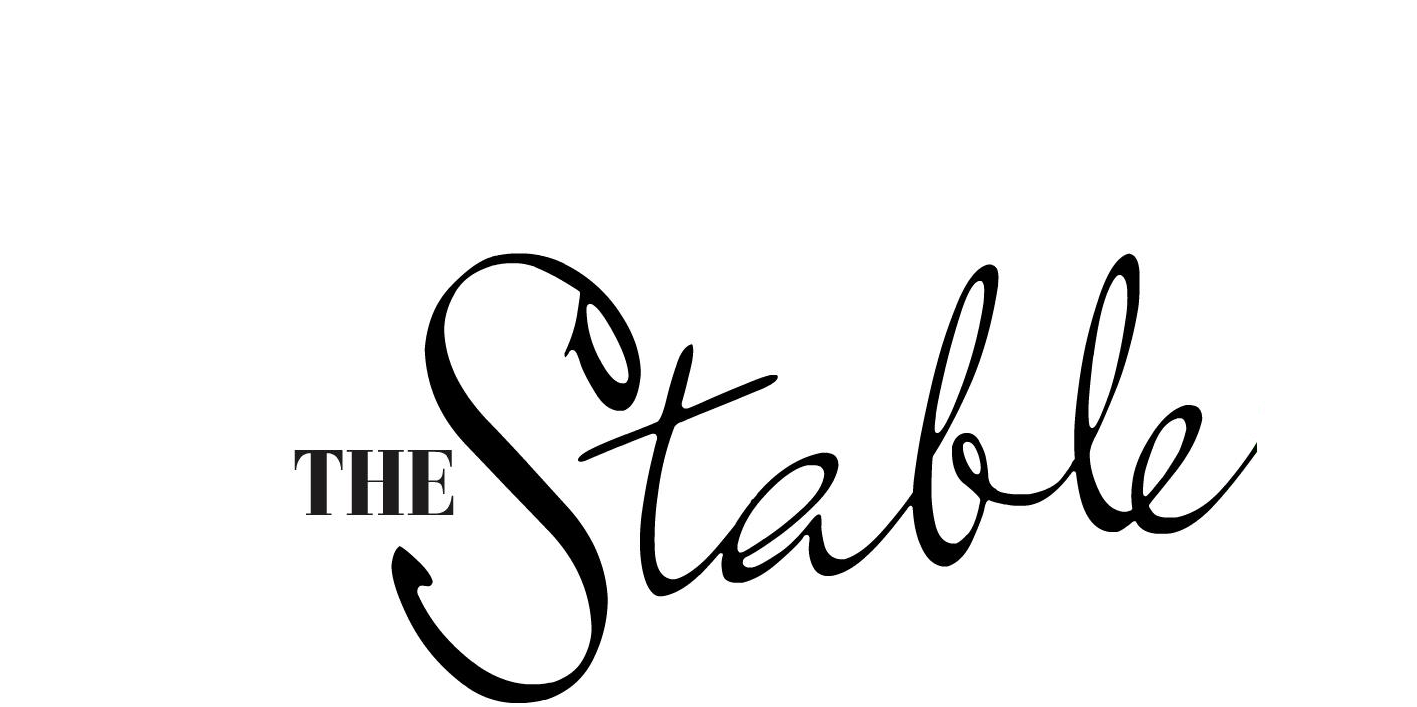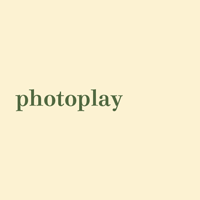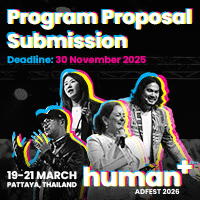Rob Omodiagbe is creative director of Uncommon Practice, part design practice, ideas facility and artist’s studio. He is one of design’s frontrunners – a designer who thinks in big ideas.
“Uncommon Practice is an attempt to structure projects differently. First we agree and then answer a client’s design brief with good design. That’s vital. Next we throw away everything but the client’s desired outcome and find a different way. Instead of a brochure, why not a short film? Instead of a series of posters why not an experiential stunt, game or product? Basically, we forget what the client thinks they need in search of something their customers might actually want.”
[Roses are temporary. Only a diamond is forever. Creative: Uncommon Practice / Agency: JWT New York]
Rob Omodiagbe talks to The Stable about Uncommon Practice, its joined-up thinking and blurring the lines between design and digital campaigns.
The Stable: What was it that first opened the door between design and creative campaign for you?
Rob Omodiagbe: I’ve always loved design ideas. Actually, that’s not true. I discovered them as a Foundation Course student many years ago; a time when sending mail always required an envelope and people still made mix tapes.
A month before applying to art school I found a book by New York designer Bob Gill titled ‘If this book helps only one designer get one original idea, then all the months I spent putting it together will not have been worth it.’ While it may have had one of the longer titles in literary history, for me it proved to be a short cut to three years studying graphic design, as I’m sure that the only reason I was accepted into the course was because I named-dropped Gill to the American assessor at my interview.
Later came the internet, and with it a wave of designers who wanted to make things ‘move’. By that point, I was more interested in telling stories. That, and finding ways to marry smart, communicable ideas to contemporary graphic design trends.
So, communication has long been an important part of what I do, and I guess if you’re a designer drawn to wit, craft and storytelling then an admiration for great advertising will take hold at some point. For me it happened late. I was already a creative director with a string of major rebranding projects behind me for organisations such as Qantas and BT Financial Group.
[Creative: Uncommon Practice / Agency: Fitzgerald+Co Atlanta]
TS: How did Rob Omodiagbe designer then become Rob Omodiagbe creative director…?
Rob Omodiagbe: In 2007, I moved to New York and into my first advertising job. It was both an unexpected opportunity and a welcome challenge, one that brought not only a new country but, after years in design, a very different way of problem solving.
Working with smart people, whose modes of thinking were as diverse as Emmy-winning adman Kash Sree and Tomato’s Graham Wood, was a hundred times better than any college course. I worked hard, tried to learn fast and along the way made some good friends and even one or two pieces of work I’m still proud of. Most importantly, the experience helped form the ideas behind my ‘Rules To Self’ and how I now approach problems at my company, Uncommon Practice.
[We helped De Beers make what matters most, matter most. Creative: Uncommon Practice / Agency: JWT New York]
TS: …where does Rob Omodiagbe, artist, fit in? How do you keep the designer from dominating the creative thinker?
Rob Omodiagbe: U.P. is a design practice, advertising ideas facility and artist’s studio. I’m fascinated by polymorphs and, while I wouldn’t claim to be one, I hope I’m a better than average ‘dabbler’.
More seriously, the goal of the company is to meet today’s consumer-centric needs and to do so by creating less ‘stuff’ and more real engagement. So a ‘think first, design later’ mantra makes it easy to keep the crafter in me in check.
Painting is a release, and surprisingly one that people seem happy to allow me to indulge in since they buy my work. Occasionally.
TS: Is “joined-up thinking” the M.O. of the design agency of the future?
Rob Omodiagbe: ‘Joined-up thinking’ is how we describe the Uncommon Practice offer, and my ‘Rules To Self’ are a guide to help bring that vision to life. They go something like this:
- Rule 1: It’s better getting paid to ‘think’. One way I describe the difference between design and advertising is to use the ‘4:1 formula’. When ad creatives receive a brief, they’re given four days to come up with an idea (think) and one day to make that idea look good (do). In design however, the ratios are reversed. This may be a simplification, but the basic premise holds true. Clients respect thinking more than doing. Ideas (especially those of the game changing variety), are seen as currency and are therefore less disposable. For me, the thinking time at the start of design projects is the most interesting, so Rule 1 is a reminder to find ways to double or triple that time.
- Rule 2: Make your ideas big. Big idea’ doesn’t mean an ad, but rather a way to change how a customer interacts with a brand for the better. A useful idea delivered in an unexpected way can be big, as can the positive customer feeling it generates. But ‘big’ takes time. That, and a certain way of approaching a problem.
- Rule 3: Design, then stop thinking like a designer. Take a look at the branding section of recent D&AD annuals. You’ll see a wide variety of work, only some of which would have been called branding even just a few years ago. Everything is branding now. It is the end product of an ever increasing range of creative disciplines and I wonder if design’s sphere of influence has receded as a result? The best creative brief is one that states the problem to be solved, and suggests rather than dictates the medium that should be used to do it. Rule 3 demands that I do most of my thinking with what my clients feel they need on hold, searching for what their customers might actually want.”
Is ‘Joined-up thinking’ the M.O. of the design agency of the future? I want to say no, because if it is then bang goes my U.S.P, but I guess on some level it has to be the way forward. However, ‘Joined-up thinking’ will mean different things to different people and that way there’ll be room for all of us.
[Creative: Uncommon Practice / Agency: The One Centre Sydney]
TS: Are the lines between PR/Design/Advertising/Content production blurring or being erased?
Rob Omodiagbe: Any lines that existed between content, advertising and creative PR began to erode years ago.
Design feels like the odd man out on the list because, as a rule, design companies don’t produce good work in any of the other areas. To be fair, design work created by the other three specialisms also tends to be limited. Clearly, that’s the reason for cross-disciplinary collaboration and acquisitions.
Those rare design companies that have the ability to be ‘Joined-up’ – for example London’s Gregory Bonner Hale (GBH) — are organisations I applaud and one day hope to emulate.
TS: What have been your greatest challenges in establishing Uncommon Practice?
Rob Omodiagbe: Uncommon Practice is still in its infancy. What will set U.P. apart is its definition of ‘good work’ and the systems I’ve created to meet this aspiration.
Like any other business, finding like-minded clients is all-important. It’s a process and one I’m enjoying, since the reaction from prospective clients has been really great.
I’ve worked on a few projects for overseas organisations since my return to Sydney and I hope this continues. It’s vital for us to have a global outlook, plus they pay better!
TS: How do you make “creativity without borders” work, in practice?
At U.P. we try to place a greater importance on the conceptual stage of a project. Sometimes we have to be creative with budgets too, as design allocations are a fraction of those made available to an advertising brief. Working with a team of collaborators that are passionate about the work can help bridge this monetary divide.
Our approach doesn’t work on every brief, and we have to be a little pragmatic on occasions. Despite this, the fact that we are open and honest about our mode of working and what we hope to achieve for our clients makes for fewer surprises when it comes to presentation time.
TS: What do next gen designers need to know about the world they are entering?
I couldn’t begin to predict how tomorrow’s landscapes (economic, communication, social etc.) will differ from today’s or how they’ll effect creativity, but I would encourage young designers to be inquisitive by embracing ideas and aesthetics in equal measure. To my mind, there’s never been a better time to work in design. Possibilities to engage and be useful to people are endless, giving us an opportunity to redefine what it is we do.


















